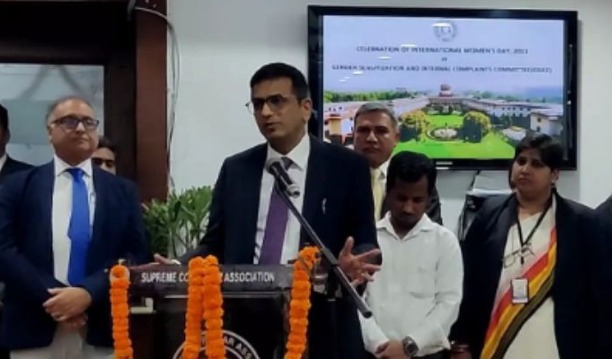
Chief Justice of India (CJI) DY Chandrachud announced on Wednesday plans for the release of a glossary of inappropriate gender terminology in order to raise awareness about casual and inappropriate allusions to women in court rulings and legal documents.
The CJI was addressing on the occasion of the Supreme Court’s belated celebration of International Women’s Day.
“One project I began a few years ago is a legal vocabulary of inappropriate terms in the discourse on gender. For example, I’ve seen judgements that refer to a woman as a “concubine” while she’s in a relationship. Women have been referred to as “keeps” in court judgements involving applications for quashing of FIRs under the Domestic Violence Act and Section 498A of the IPC. It is critical that we focus on these terms not to pass judgement, but to understand why their use belies our willingness to be gender sensitive.”
CJI added that the aforementioned glossary will be released soon.
The legal glossary was created by a committee chaired by Calcutta High Court judge Justice Moushumi Bhattacharya, former Madras High Court judge Prabha Sridevan, former Jammu and Kashmir High Court Chief Justice Gita Mittal, and Professor Jhuma Sen, who is currently an adjunct faculty member at the West Bengal National University of Juridical Sciences in Kolkata.
CJI also expressed optimism that such a glossary would shed light on how women are discriminated against in society and the legal profession, notably via the use of language.
It was emphasised that the purpose of the glossary is not to belittle judges, but to develop and comprehend mental processes such as preconceived beliefs and biases.
“It would be impossible for us to progress as a society unless we are honest about these facets,” the CJI remarked.
He also discussed plans to rebuild the existing Supreme Court Annexe building owing to space restrictions faced by the apex court’s main building.
“The Supreme Court [building] is bursting at the seams. This is a historic building. During our walkthrough discussion, I suggested that the Women’s Bar Association have a huge room on the bottom floor [of the new building]. I am confident that the women’s bar organisation will occupy the greatest space in 50 or 75 years down the line.”




